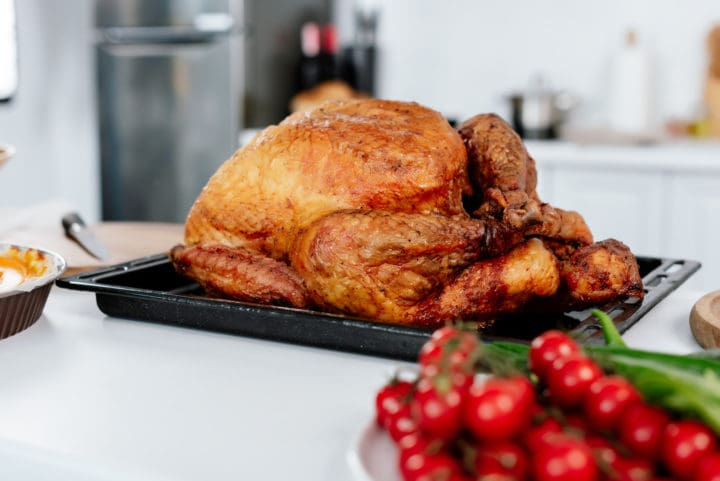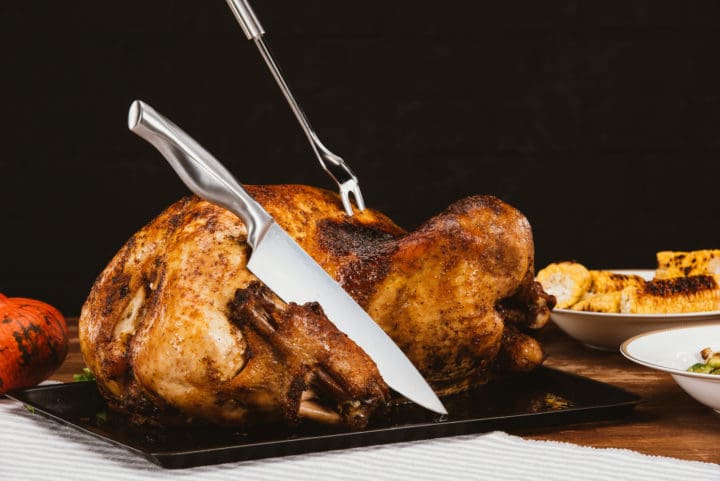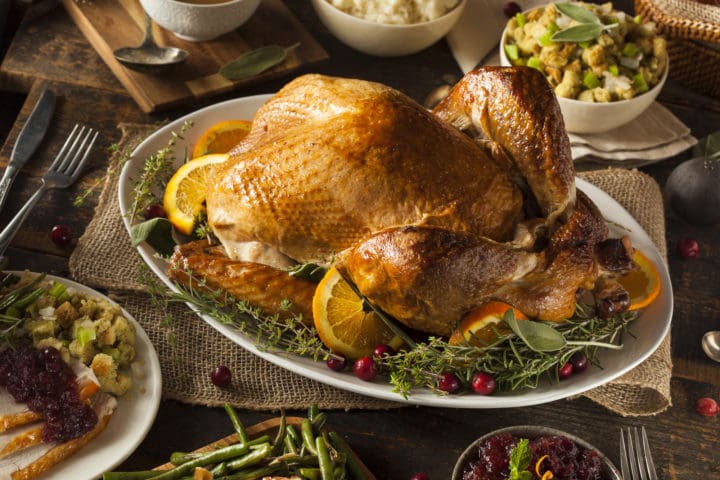Bringing Breakfast Back
Breakfast has always been a tough thing for me to do. Especially in adulthood. I mean, I know that I SHOULD eat breakfast but knowing that you should do something and actually doing it...
When you think about Thanksgiving dinner, one of the first things that comes to mind is turkey. The turkey is the star of the show with its crispy skin and inviting aroma. It is the center stage placement of the bird that makes picking the perfect turkey critical to pulling off a successful Thanksgiving dinner. Here are some tips that will teach you how to pick a turkey that will impress you. Let's go shopping!

Image from Depositphotos
First things first, you need to figure out how big of a turkey you need to feed your guests. I hope you remember your calculus classes because we are about to do math. Ready? Here is the formula for buying the perfectly sized turkey; Number of guests x 1.5 = Pounds of turkey you need. That will give you plenty of food for everyone with a little leftover to enjoy as a late-night snack. So as an example, if we have 10 people eating, we multiply by 1.5 to learn that we need a 15-pound turkey. Make sense?
https://divinelifestyle.com/thanksgiving-mistakes-cooks-make/
The next thing to figure out when learning how to pick a turkey is whether or not you are buying a fresh or frozen bird. Let's break down the differences. Fresh turkey is a turkey that has never been chilled below 26 degrees. I know, I thought freezing was 32 degrees as well….apparently not when talking turkey. According to the people who raise them for a living, a turkey freezes at 26 degrees. Fresh turkey can be harder to find, as the bird is perishable. In terms of flavor, the meat should have a better texture. Freezing meat causes the water in the cells to expand, and that in turn can burst cell walls, impacting mouth feel and moisture content. Fresh also tends to be more expensive.
Frozen birds have been taken to 0 degrees. These turkeys are readily available year-round and tend to be cheaper than fresh. The meat doesn't quite have the mouth feel of the unfrozen variety, but it is by no means bad. Don't hesitate to use a frozen bird; it will taste great.

Image from Depositphotos
Right. You know how much turkey you need to buy and if you are buying fresh or frozen, but what about all the other labels that appear on the packaging of a turkey? Let's break em' down.
If the package says self-basting, it means the turkey has been injected with stuff. The staff is typically a salty stock mixed with some type of fat and “seasonings”. The mixture will contain some sort of sodium phosphate as well. This makes the meat draw up water like a sponge. I don't like stuff soaked with phosphate as you (1) end up paying for water weight and (2) that liquid all comes out when you cook the meat. If you do use a self-basting bird, don't add salt; there is plenty already in the meat.
https://divinelifestyle.com/12-thanksgiving-turkey-recipes/
If you're looking for a Kosher turkey, there are a few things you should know. Firstly, it means that the bird was processed under the supervision of a Rabbi. Secondly, these birds are usually free-range and fed a grain-based diet. Lastly, kosher turkeys are soaked in salt brine, so be careful not to add too much salt if you're cooking one of these birds.
Natural turkeys are birds that haven't been treated with any additives, and they're minimally processed. They're not injected or brined, so they're just turkeys as they are.
When you see labels like “hormone-free,” “organic,” or “free-range,” it's important to know what they mean. Hormone-free means nothing, at least in the United States. All poultry is hormone-free by law. Organic birds were fed 100% organic feed and were never given antibiotics. Free-range birds had access to the outdoors.

Image from Depositphotos
All of the things mentioned above are important, but if you are not using a yummy recipe it is for naught. Check out our popular post: Perfect Turkey Recipe. Getting the recipe correct and having one that has tons of flavor is the key to getting the perfect bird. A cheap bird done right is far better than an expensive one cooked poorly. Keep that in mind when you go to pick out your bird this Thanksgiving.
We hope that you are inspired by this How to Pick a Turkey for Thanksgiving post. Happy Thanksgiving!

Comments are closed.